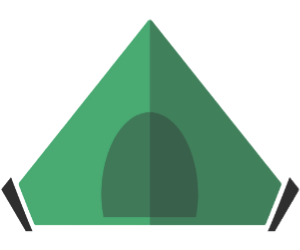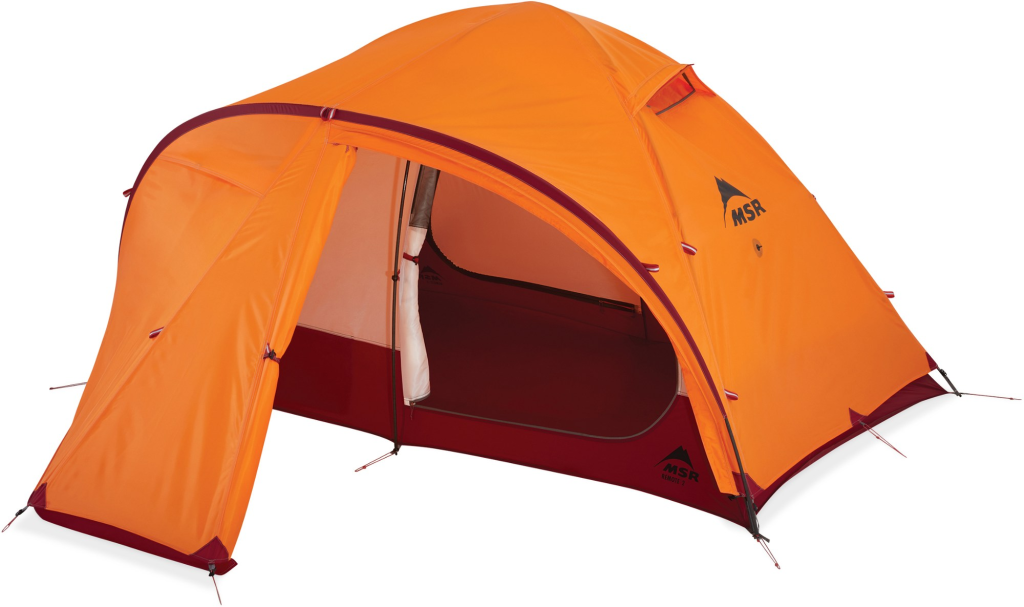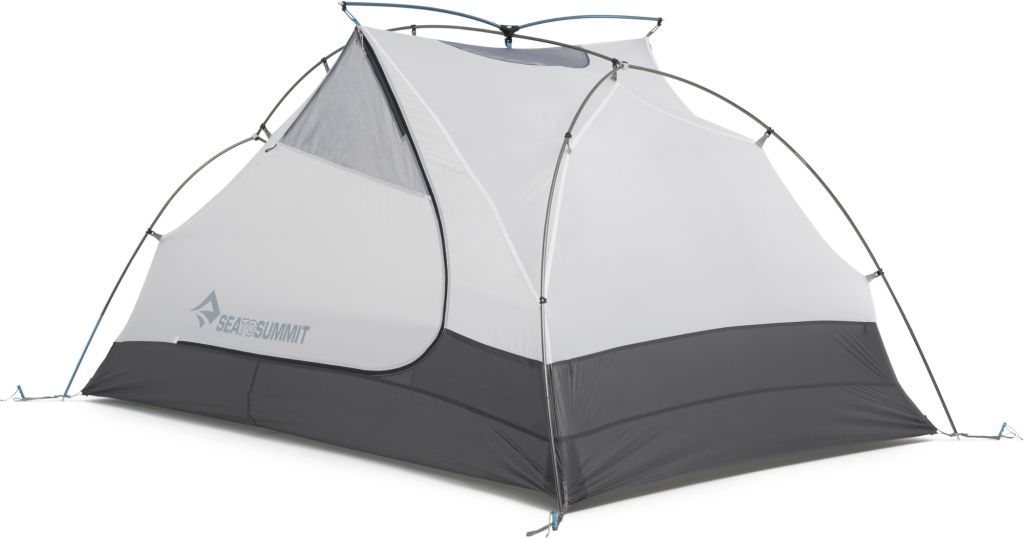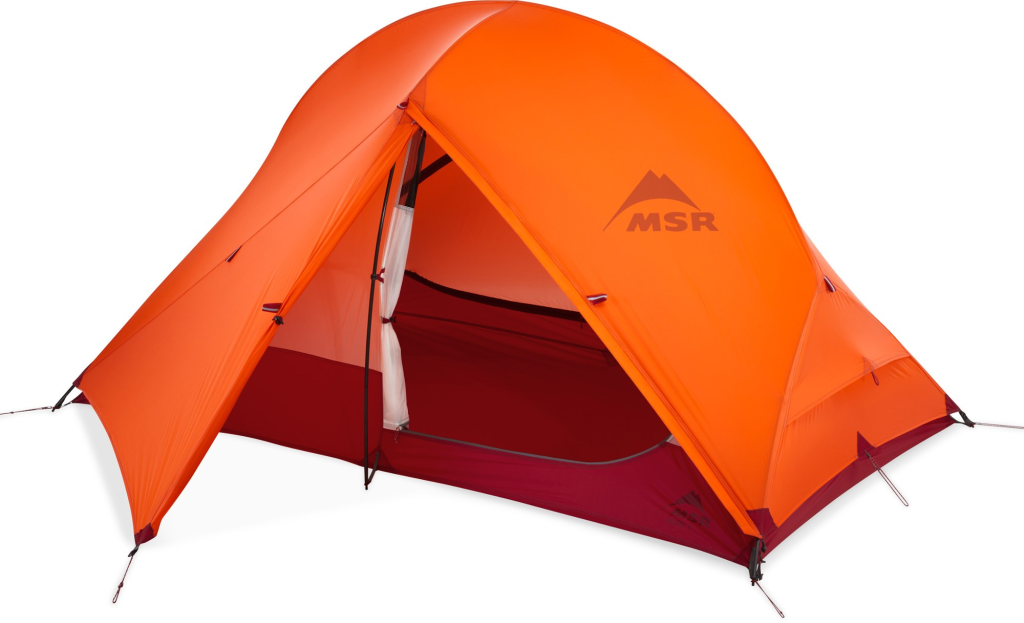
Looking for the best mountaineering tent? You've come to the right place! Our comprehensive guide will walk you through the top-rated options, key features to consider, and expert tips for a remarkable outdoor adventure.

When setting off on an exhilarating mountaineering expedition, having the perfect gear becomes paramount. And among the essential equipment, a dependable mountaineering tent reigns supreme. These tents serve as your sanctuary in the face of rugged terrain and capricious weather conditions.
In this all-encompassing guide, we'll immerse ourselves in the realm of mountaineering tents, exploring the crucial features to mull over, expert advice for selection, and the crème de la crème of available options. Whether you're a seasoned climber or about to embark on your inaugural ascent, this guide will steer you towards choosing the best mountaineering tent for your escapades.
Here’s a rundown of our top picks for mountaineering tents:
| Product | Seasonality | Capacity | Where To Buy |
| The North Face Assault 3 FUTURELIGHT Tent | 3- 4-Season | 3-Person | REI |
| Mountain Hardwear Trango 2 Tent | 4-Season | 2-Person | REI |
| MSR Remote 2 Tent | 4-Season | 2-Person | REI Amazon |
| Sea to Summit Telos TR2 Plus Tent | 3 - 4-Season | 2-Person | REI |
| MSR Access 2 Tent | 4-Season | 2-Person | REI Amazon |

| TECHNICAL SPECIFICATIONS | |
| Ideal Use Seasonality Capacity Floor Area Peak Height Pole Material Tent Material Minimum Trail Weight Packaged Weight | Mountaineering 3- 4-Season Tent 3-Person 36.9 sq. ft. 46 inches Carbon-fiber Easton Syclone 20-denier FUTURELIGHT recycled nylon with DWR 6 lbs. 5 oz. 6 lbs. 13 oz. |
The North Face Assault 3 FUTURELIGHT Tent Review
The North Face Assault 3 FUTURELIGHT Tent is a game-changer in the realm of mountaineering shelters. As an avid mountaineer, I recently had the opportunity to put this tent to the test in the rugged alpine terrain, and it exceeded my expectations in every way.
One of the standout features of the Assault 3 is its exceptional construction. Crafted with high-quality materials, this tent strikes a remarkable balance between durability and weight. Weighing in at just under 6.5 pounds, it impressed me with its featherlight design without compromising on strength. Constructed using the innovative FUTURELIGHT 3L recycled fabric, the tent offers superior breathability, making condensation a thing of the past. This feature greatly enhances comfort during extended stays in challenging weather conditions.
Setting up the Assault 3 is a breeze, thanks to its user-friendly design. The ridge-pole assembly allowed me to tension the tent's top effortlessly, even in adverse weather conditions. At the same time, it also comes with an easy-pitch X-tent design for convenient pitching. With a spacious floor area of 36.9 square feet, this 3-person tent offers ample room for gear storage and comfortable sleeping arrangements. The 46-inch peak height allowed for easy movement within the tent, further enhancing the overall livability.
When it comes to protection against the elements, The North Face Assault 3 truly shines. The tent's robust design, reinforced by its sturdy Carbon-fiber Easton Syclone, ensures excellent stability, withstanding high winds and heavy snow loads. Moreover, the thoughtfully placed top vents allowed for optimal airflow, preventing condensation buildup and maintaining a dry interior.
| PROS | CONS |
| Lightweight construction makes it ideal for mountaineering expeditions Made from recycled yet durable materials Easy to pitch and disassemble | No known drawbacks |

| TECHNICAL SPECIFICATIONS | |
| Ideal Use Seasonality Capacity Floor Area Peak Height Pole Material Tent Material Minimum Trail Weight Packaged Weight | Mountaineering 4 Season Tent 2-Person 40 sq. ft. 38 inches DAC Featherlite aluminum 40-denier ripstop nylon 8 lbs. 9.7 oz. 9 lbs. 10.2 oz. |
The Mountain Hardwear Trango 2 Tent Tent Review
The Mountain Hardwear Trango 2 Tent is a stalwart shelter that stands as a beacon of reliability for intrepid adventurers seeking uncompromising protection and unwavering durability in their alpine expeditions. As an experienced mountaineer, I had the privilege of putting this exceptional tent to the test, and it exceeded my expectations, emerging as an indomitable fortress in the face of nature's most formidable challenges.
Crafted with meticulous attention to detail, the Trango 2 is built to withstand the rigors of extreme environments. The tent's robust construction, utilizing rugged and ripstop nylon on its canopy, offers exceptional durability and abrasion resistance, ensuring it can handle the toughest terrains. This reinforced design instilled in me a sense of confidence, knowing that my shelter would stand strong against the elements. Meanwhile, both its floor and rainfly fabrics are crafted from 70-denier nylon taffeta, each having a 10,000mm waterproof rating.
Setting up the Trango 2 proved to be a breeze, thanks to its intelligent and user-friendly design. The color-coded poles and intuitive clips allowed for effortless and efficient assembly, even in harsh weather conditions. The tent's freestanding structure provided flexibility in choosing the perfect campsite, and the ability to pitch the tent fly first kept the inner tent dry during rainy setups.
The Trango 2's interior is spacious, offering ample room for two occupants and gear. The well-designed layout includes multiple pockets and gear loops for easy organization, maximizing livability in a compact space. The tent's generous headroom and steep walls allowed for comfortable movement inside, enhancing overall comfort during extended stays.
When it comes to protection against the elements, the Trango 2 truly shines. The tent's fly features fully taped seams and a waterproof coating, providing reliable and robust waterproofing in heavy rain or snowfall. The welded corners and reinforced guy-out points enhanced the tent's stability, withstanding high winds with ease. The well-placed vents and mesh panels ensured excellent ventilation, reducing condensation buildup and maintaining a comfortable interior climate.
| PROS | CONS |
| Designed ergonomically; full of storage options on its interior and on its vestibules Ventilated design keeps its interior cool and free from condensation Durable and weather-resistant construction | Quite expensive |

| TECHNICAL SPECIFICATIONS | |
| Ideal Use Seasonality Capacity Floor Area Peak Height Pole Material Tent Material Minimum Trail Weight Packaged Weight | Mountaineering 4 Season Tent 2-Person 33 sq. ft. 44 inches Easton Syclone 40-denier ripstop nylon 6 lbs. 11 oz. 7 lbs. 2 oz. |
MSR Remote 2 Tent Review
The MSR Remote 2 Tent is a formidable shelter designed to withstand the harshest alpine conditions. Built with uncompromising durability, this double-wall tent ensures maximum protection and comfort for adventurers pushing the limits of their expeditions.
Constructed to withstand fierce winds and heavy snow loads, the Remote 2 features a sturdy central-support frame and robust Easton® Syclone™ poles. These components provide exceptional stability, allowing the tent to stand strong even in the most challenging environments. Rainfly vents effectively help in temperature regulation, while snow flaps seal out spindrift, maintaining a dry and comfortable interior.
One of the standout features of the Remote 2 is its spacious interior and extra headroom. When hunkered down on the side of a mountain, this tent becomes a secure haven, offering ample space to rest and regroup. The large hooped vestibule, complete with snow flaps, provides generous storage space for climbing equipment, keeping it protected and easily accessible.
Setting up the Remote 2 is a breeze, thanks to the color-coded pole clips. Quick and efficient setup is guaranteed, even in challenging conditions, allowing adventurers to focus on their expedition without wasting time on complicated assembly.
The MSR Remote 2 Tent prioritizes durability with reinforced, reflective guyout points that prevent fabric tears and ensure optimal tension in ferocious winds. The DuraShield™-coated, waterproof bathtub floor keeps occupants dry, providing reliable protection against moisture. Two internal pockets add organization and convenience, offering easy access to essential gear.
Transporting the tent is effortless with the wide-mouth stuff sack, simplifying packing and loading. The Remote 2 tent includes the tent body, rainfly, poles, stakes, guylines, stuff sack, and setup instructions, ensuring a comprehensive package for adventurers seeking a reliable and robust shelter.
| PROS | CONS |
| Designed to be lightweight and durable at the same time Provides optimal ventilation Setup is fairly simple | Prone to internal condensation |

| TECHNICAL SPECIFICATIONS | |
| Ideal Use Seasonality Capacity Floor Area Peak Height Pole Material Tent Material Minimum Trail Weight Packaged Weight | Mountaineering / Backpacking 3- 4-Season Tent 2-Person 28 sq. ft. 43.5 inches Aluminum DAC TH72M 20-denier ripstop nylon 3 lbs 9.7 oz. 2 lbs. 9.5 oz. |
Sea to Summit Telos TR2 Plus Tent Review
The Sea to Summit Telos TR2 Plus Tent takes outdoor to the next level with its ingenious design and exceptional performance. Designed for 3+ seasons, this tent incorporates added materials to ensure warmth and dryness in harsher conditions, making it an ideal choice for adventurous souls seeking reliable protection.
One of the standout features of the Telos TR2 Plus is its fabric inner tent, which effectively keeps out cold drafts, providing a cozy and comfortable interior. The higher-specification waterproof floor enhances its capability to fend off wet weather, ensuring a dry and secure shelter.
The Telos TR2 Plus utilizes the innovative Tension Ridge™ architecture, featuring an inverted brow pole. This unique design not only allows for extensive interior living space but also increases ventilation and provides higher doors. The result is a spacious and airy environment that enhances comfort during extended stays.
Keeping condensation at bay is effortless with the oversize Apex Vent™ positioned at the highest point of the tent. This vent efficiently expels warm air, preventing condensation buildup, and can be easily zipped closed from inside the tent for added convenience. Adjustable vents at the base of the tent offer further control over airflow, allowing effective management of humidity and condensation without compromising protection from the rain.
The Telos TR2 Plus offers versatility in setup. In wet conditions, setting up the rainfly first ensures the inner tent and gear remain dry. Conversely, when packing up, the reverse order is recommended.
This thoughtful design eliminates the hassle of wet gear and provides added convenience. For stargazers, the rainfly can be rolled up to the Tension Ridge, allowing unobstructed views of the night sky. When needed, it can be deployed quickly and secured from inside the tent, ensuring a swift response to changing weather conditions.
| PROS | CONS |
| Great for mountaineering adventures with moderate weather conditions Lightweight design enables quick and hassle free-packing Great in preventing internal condensation | Might not put up a good fight against strong winds |

| TECHNICAL SPECIFICATIONS | |
| Ideal Use Seasonality Capacity Floor Area Peak Height Pole Material Tent Material Minimum Trail Weight Packaged Weight | Mountaineering 3- 4-Season Tent 2-Person 29 sq. ft. 42 inches Easton Syclone composite 20-denier ripstop nylon/10-denier micro-mesh polyester 3 lbs. 10 oz. 4 lbs. 1 oz. |
MSR Access 2 Tent Review
The MSR Access 2 Tent is a remarkable winter shelter designed to meet the demands of adventurous explorers in cold and snowy environments. With its impressive features and thoughtful design, this tent delivers a reliable and comfortable experience in the backcountry.
One of the standout features of the Access 2 is its limited mesh on the tent body, which effectively retains hard-earned warmth on cold nights. This feature, combined with the tent's overall light weight, ensures that you remain nimble while skiing and hiking. The central-support frame is built to withstand overnight snow-loading, providing peace of mind in extreme winter conditions. The large hooped vestibule, complete with snow flaps, offers ample space to shelter climbing equipment, keeping it protected from the elements.
The tent's spacious floor plan and extra headroom create a generous interior that comfortably accommodates two climbers and their bulky winter gear. The unified, hubbed Easton® Syclone™ pole simplifies the pitching process, even in challenging winter conditions. Its composite materials are resistant to breaking, ensuring reliability when you need it most.
The Access 2's rainfly vents effectively reduce condensation, keeping the interior dry and comfortable. The Xtreme Shield™ waterproof polyurethane coating provides excellent protection against the elements while promoting long-term durability, ensuring the tent stands up to the rigors of winter adventures.
With two doors and two internal pockets, the Access 2 offers convenient access and organization for your gear. The multiple guyout points further enhance stability and ensure a secure pitch, even in gusty winds.
| PROS | CONS |
| Provides secure and hassle-free assembly Weather-proofing is top-notch Ample interior space for the storage of climbing equipment | Its poles aren’t as durable as we thought it to be |

Embarking on a mountaineering expedition demands meticulous preparation, and the right equipment plays a pivotal role in ensuring your journey's success. Among the arsenal of indispensable gear, a high-quality tent stands as a stalwart guardian.
More than just a shelter, a mountaineering tent shields you from the unforgiving elements that characterize the mountain environment. This guide delves into the critical factors to contemplate when selecting a mountaineering tent, empowering you to make an informed decision that aligns seamlessly with your outdoor pursuits.
Before delving into the technical intricacies of choosing a mountaineering tent, it is crucial to gain a comprehensive understanding of your specific requirements and preferences. Reflect on the following questions:
Mountaineering tents are engineered to withstand the harshest weather conditions, from fierce winds and heavy snowfall to bone-chilling temperatures. Familiarizing yourself with the prevailing weather patterns of your chosen destinations will aid in determining the requisite level of weather resistance your tent should possess.
Consider the number of fellow adventurers who will accompany you on your mountain escapades. Mountaineering tents are available in various sizes, catering to solo explorers and groups ranging from two to four or more. Opting for the appropriate size ensures optimal comfort and sufficient space for both occupants and gear.
The price range of mountaineering tents can be diverse. Defining your budgetary boundaries will facilitate a focused search, helping you discover the tent that strikes the ideal balance between quality and affordability.

Durability and weight serve as indispensable factors when selecting a mountaineering tent. It is imperative to choose a tent that can withstand the rugged mountain environment while remaining lightweight enough for arduous treks. Seek out tents crafted from premium materials like ripstop nylon or polyester, reinforced with sturdy seams and poles. Additionally, carefully assess the tent's packed weight to ensure it aligns with your carrying capacity.
Withstanding the onslaught of challenging weather conditions is imperative for mountaineering tents. Look for tents boasting a high waterproof rating, preferably exceeding 3,000mm, to ensure unwavering protection against heavy rain and snow. Pay attention to the tent's wind resistance, ventilation options, and the inclusion of a rainfly for added fortification.
Mountaineering tents encompass a plethora of designs, such as tunnel tents, dome tents, and geodesic tents. Each design offers unique benefits in terms of stability, livability, and ease of setup. Carefully consider the topography of your camping terrain and select a tent design that aligns seamlessly with your specific needs. Evaluate the tent's interior space, headroom, presence of gear storage vestibules, and ease of entry and exit.
Mountaineering tents are typically classified as either 3-season or 4-season tents. The former is ideal for spring, summer, and fall adventures, providing excellent ventilation and protection from rain. The latter, specifically engineered for winter and high-altitude mountaineering, offer enhanced weather resistance and insulation. Choose a tent that caters to your intended season of use.

When faced with challenging weather conditions or the weariness that accompanies a long day of hiking, the ability to set up your tent quickly and effortlessly becomes paramount. Look for tents equipped with intuitive setup systems, color-coded poles, and clear instructions. Freestanding tents, which do not rely on stakes for support, can prove advantageous.
For multi-day mountaineering expeditions, the compactness of your tent is of utmost importance. Opt for tents that can be compressed into a minimal size, effortlessly fitting into your backpack. Additionally, consider the tent's shape and how it can be accommodated alongside your other gear.
While budgetary considerations are significant, it is equally vital to assess the value for money offered by the tent. Evaluate the overall quality, durability, and features provided by the tent and weigh them against the price. Sometimes, investing slightly more upfront can result in a tent that outlasts and outperforms its counterparts over the long run.

Mountaineering tents, an indispensable piece of equipment for outdoor enthusiasts venturing into challenging terrains and extreme weather conditions, play a pivotal role in ensuring safety and comfort.
However, selecting the right tent is just one part of the equation; understanding how to utilize it effectively is equally crucial. In this comprehensive guide, we will delve into various aspects of using mountaineering tents, exploring everything from erecting the tent to harnessing its features for supreme comfort and unwavering safety.
Setting up a mountaineering tent properly serves as the bedrock for a secure and cozy outdoor experience. Let's delve into the steps to follow when erecting your tent:
Choosing a level and well-drained campsite that shields you from potential hazards like cascading rocks or avalanches is paramount. Seek an area with soft ground that facilitates easy insertion of stakes.
Rid the campsite of any rocks, sticks, or debris to create a smooth surface. This measure prevents discomfort and safeguards the tent floor against potential damage.
Unpack the tent and meticulously lay out all components, including the rainfly, poles, and stakes. Prior to proceeding, ensure that all the necessary parts are at hand.
Refer to the manufacturer's instructions to seamlessly assemble the tent poles. Most mountaineering tents employ shock-corded poles, which feature an elastic cord for effortless setup.
If your tent is accompanied by a rainfly, affix it securely to the tent body. The rainfly acts as an additional layer of fortification against rain, wind, and condensation.
Insert the tent stakes into the designated loops or grommets at the tent's corners and guylines. Ensure they are firmly embedded in the ground, providing unwavering stability.
With the poles assembled and the rainfly attached, commence the process of raising the tent by inserting the poles into the pole sleeves or clips. Progress around the tent systematically, ensuring the poles are correctly inserted and the tent is taut.
After the tent is raised, make any necessary adjustments to guarantee proper alignment and tension. For enhanced stability, securely stake out the guylines, especially when facing gusty winds.
Adhering to proper maintenance and care protocols is pivotal to extending the lifespan and maximizing the performance of your mountaineering tent. Here are some invaluable tips for keeping your tent in pristine condition:
Engage in regular cleaning endeavors to eradicate dirt, debris, and unsightly stains from your tent. Adhere to the manufacturer's instructions as different materials may necessitate specific cleaning methods. In general, a gentle hand washing with mild soap and water suffices. Avoid using harsh chemicals or machine washing, as they can compromise the tent's waterproof coating. Here’s a guide on tent cleaning.
Following each use or cleaning session, ensure that the tent is meticulously dried before packing it away. Hang it up or lay it flat in a well-ventilated area, away from direct sunlight. Damp or wet tents are prone to mold and mildew formation, leading to unpleasant odors and potential fabric damage.
During periods of non-use, store your tent in a cool and dry location, ideally in a breathable storage bag or mesh sack. Refrain from storing the tent in a compressed state for prolonged periods, as this can undermine the fabric's durability and waterproofing capabilities.
Regularly scrutinize your tent for signs of wear or damage, such as rips, tears, or malfunctioning zippers. Address minor issues promptly using repair kits specifically designed for tents. These kits typically contain adhesive patches, seam sealant, and replacement parts.
Mountaineering tents are meticulously engineered to provide unparalleled protection and comfort across diverse weather conditions. Here are some invaluable tips to optimize your tent's features for various scenarios:
By adhering to these guidelines, you can master the art of using mountaineering tents with finesse, maximizing both safety and comfort during your outdoor expeditions.
Choosing the best mountaineering tent is a consequential decision that significantly impacts your outdoor experiences. By understanding your needs, considering essential features, and evaluating additional factors, you can make an informed choice.
Prioritize durability, weather resistance, and weight while factoring in your budget and personal preferences. Armed with the perfect mountaineering tent, you can immerse yourself in the awe-inspiring grandeur of the mountains, confident in the knowledge that you are protected from the elements.
Related posts: